Fort Mountain Stone Wall (400 AD)
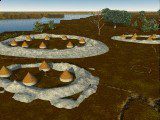 1.SapeloShellRings 1.SapeloShellRings |
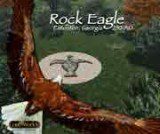 2.RockEagle 2.RockEagle |
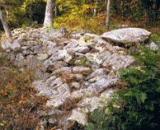 3.FortMountain 3.FortMountain |
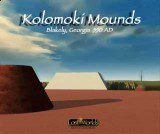 4.Kolomoki 4.Kolomoki |
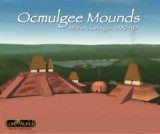 5.Ocmulgee 5.Ocmulgee |
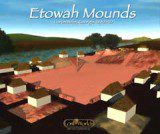 6.Etowah 6.Etowah |
| Above: Watch an excerpt about Fort Mountain from the Lost Worlds: Georgia DVD. Buy today or make a donation and help support LostWorlds.org. All sales help fund future videos and exhibits. For more videos visit our YouTube channel, LostWorldsTV. |
Rock Eagle and Rock Hawk were not the only stone structures built during the Woodland period. Other stone structures can be found in north Georgia but this time they are not in the form of bird effigy mounds. Instead they are mysterious stone walls built atop several mountain peaks. Several of these walls, sometimes circular in design, existed throughout north Georgia including atop Stone Mountain, Alec Mountain, Ladd’s Mountain and others but many were demolished for road fill. A few of these walls still remain including at the top of Fort Mountain. The mountain derives its name from the stone structure which was originally believed to be a Native American fortification.
The structure varies in height from 3 to 10 feet though averages around four feet. It measures from 4.5 feet wide at its narrowest point to 16 feet at its widest point. It has an east-west orientation and extends for about 928 feet near the summit of Fort Mountain. There are four breaks in the wall as it zigzags between the 2750-2760 foot elevation level. It is thought that these breaks in the wall’s structure are recent additions added by European colonists and explorers. There are also between 19 – 29 pits in the wall which are also believed to have been added by looters searching for artifacts within the wall.
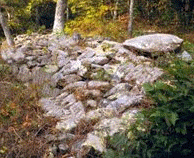 The wall is constructed of stones from the surrounding summit area of the mountain. [View Gallery] Though most of the stones are small or medium sized requiring no more than one or two individuals to lift them into place, a few large boulders weighing several tons are also part of the wall particularly on the eastern end. These boulders appear to have already been in place from natural rock falls and the Native American builders simply located the wall in such a way as to incorporate them into its structure. In some instances the wall seems to detour specifically to take advantage of these natural features.
The wall is constructed of stones from the surrounding summit area of the mountain. [View Gallery] Though most of the stones are small or medium sized requiring no more than one or two individuals to lift them into place, a few large boulders weighing several tons are also part of the wall particularly on the eastern end. These boulders appear to have already been in place from natural rock falls and the Native American builders simply located the wall in such a way as to incorporate them into its structure. In some instances the wall seems to detour specifically to take advantage of these natural features.
| Zoom in to view the Fort Mountain stone wall. |
The wall is believed to have been built around 400 A.D. and to have had a ceremonial function since it lacks certain characteristics necessary for defensive purposes. First, the wall is so low in spots that people inside the wall would be completely exposed to danger from without. Second, there is no source of water within the wall to sustain its inhabitants during an extensive siege. Third, the wall fails to take advantage of strategic contours of the mountain slope and in some instances actually changes course and makes persons behind the wall more susceptible to hostile actions from persons outside the wall. For these reasons it is doubtful the wall was ever a true fort.

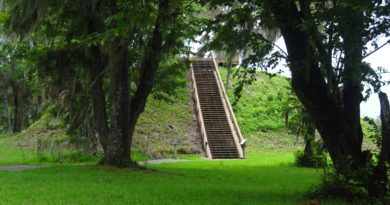
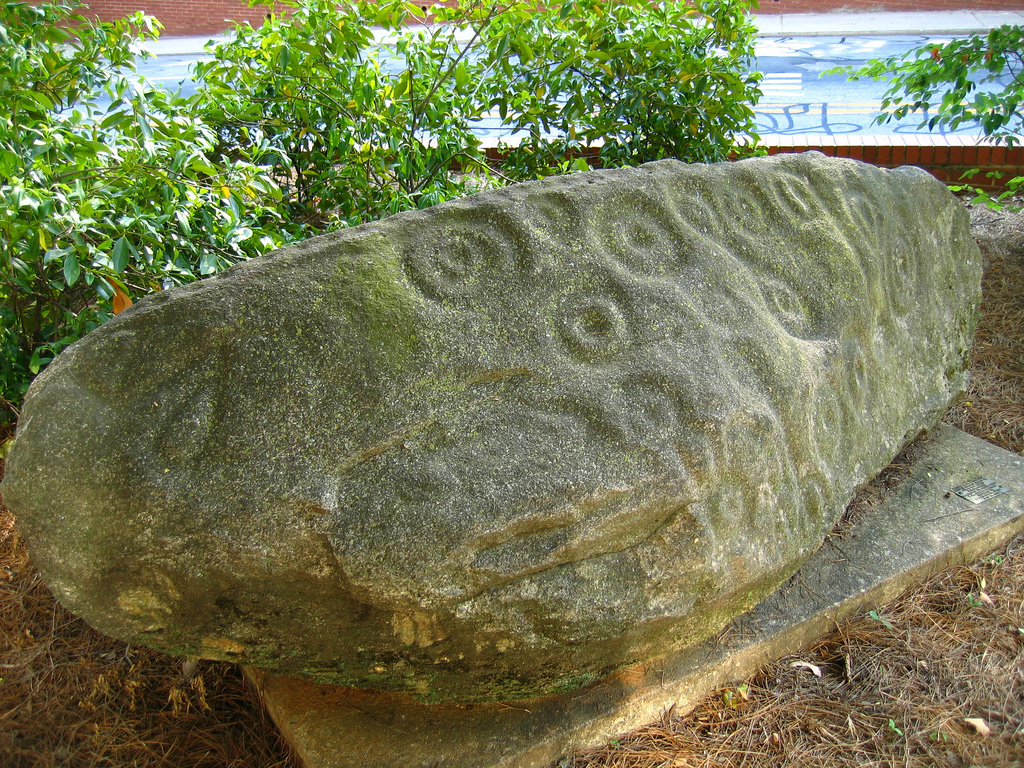

Pingback: MegaLove | Blade And Chalice